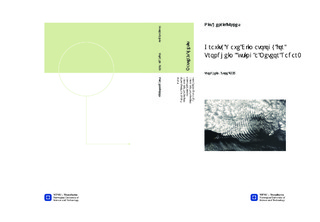Gravity Wave Climatology for Trondheim using a Meteor Radar.
Master thesis
Permanent lenke
http://hdl.handle.net/11250/247039Utgivelsesdato
2013Metadata
Vis full innførselSamlinger
- Institutt for fysikk [2695]
Sammendrag
In this thesis, a gravity wave climatology for the altitude range of the airglow (hydroxyl) layer of 83 to 91km have been made using data from a meteor radar located at Dragvoll (64,4$^{o}$N, 10,5$^{o}$E) in Trondheim. The climatology stretches from the 9th of September until the 30th of April. The wave "activity" results, from the average daily variance in the perturbed line of sight velocity, show two minima at the equinoxes and a maxima between them in mid winters. The results agree with similar studies from Rothera (68$^{o}$S) and Esrange (68$^{o}$N) which is comparable with Trondheim in latitude.A case study is made for the 3rd of December comparing wave propagation directions shown in airglow images with hourly direction plots from the meteor radar. The comparison shows agreement between the two methods proving that meteor radars can be used to study preferred wave propagation directions. Monthly averaged preferred wave propagation direction results for the period 9th of September 2012 to the 30th of April 2013, show equatorward preferred wave propagation direcion during fall, abruptly changing through end of fall to strictly polewards in November. End of winter through start of spring shows an equatorwards and westwards preferred wave direction rotating counter clockwise to equatorwards and eastwards. The results were comparable with climatologies made with airglow imagers due to the chosen altitude range. Comparisons showed both agreement and disagreement in preferred wave propagation direction.
